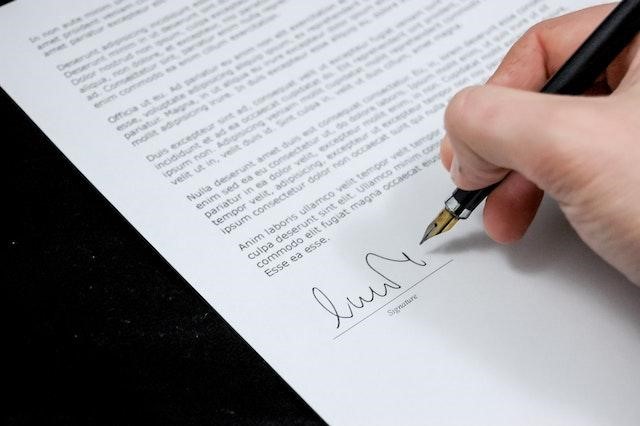An HR department plays an important role in the success of every business. It is responsible for ensuring the company achieves its goal through human resources. This department ensures a good relationship between employers and employees and among employees. A lot of documentation takes place for the department to operate smoothly and efficiently.
It is responsible for drafting employment contracts, human resource policies, work termination guidelines, and others. Basically, anything that involves documentation of human acquisition, development, motivation, and maintenance happens.
This article explores using HR documentation to tap the maximum human resource potential.
Human Resource Documentation Overview
Human resource documentation is the process of gathering all information about employees throughout their entire lifetime in a company. The process begins when the workers join a company and continues until they leave. It involves different documents used in onboarding, performance management, legal compliance, time and attendance and medical information. In short, HR documents are sensitive and must be well crafted by an expert.
As such, you must make sure the documents for HR are professionally maintained and clearly outline the employee’s responsibilities.
Enhancing Your Human Resources with Documentation
Posing questions before creating a document is important and acts as a guide. Also, the document team can have a clear picture of what to include. Once the team evaluates all the questions, they can create a wholesome document that touches on different aspects of human resources. Some components include onboarding, employee data management, recruitment and company policy compliance.
Create an All-Inclusive Document
After deliberating on its suitability, you can create an HR operations document. An ideal document should cover all the HR areas. When every aspect of human resources is covered, all teams in the department are catered to. Whether it’s recruitment, performance, or workers’ payment, the document should handle this.
Creating a document template should have some of the following features:

1. Basics of employment
- Types of contracts
- Employment equals opportunities
- Recruitment procedures
- Job attendance
2. Jobsite policies
- Safety and health in the workplace
- Harassment and violence protection
- Workers data protection and confidentiality
3. Employees’ code of conduct
- Employees Dressing code
- Conflict of interests
- Workplace visitations
- General workplace relationships and socializing
- Cyber security and digital device usage in the workplace
- Hiring of relatives
4. Compensation and performance management
- Payroll and compensation
- Salary increments, bonuses and overtime remunerations
- Performance appraisals and reviews
- Employee training, performance and management
5. Employee benefits and bonuses
- Compensation plan
- Health coverage
- Company resource utilization, e.g., cars, phones
- Parking
- Remote working
6. Onboarding Process
- Enlist all onboarding checklists
- Job offer emails
- Appointment letters
- New employee welcome letters or emails
- Policies regarding new hires
7. Working hours and vacations
- Working hours and paid time off
- Sick leaves
- Holidays
- Parental leave
- Bereavement leave
8. Job termination and exit process
- Discipline procedure
- Termination
- Resignation
- Exit interview
- Clearance form
- Final settlement
9. Make the Document Creation a Team Work
Human resource management isn’t a one-person job. Therefore, it calls for the collaboration of the entire department to ensure every section is captured well. For instance, the department involved in onboarding or human development should take charge of these sections.
Once the team drafts the human resource document, the senior HR managers must ratify it. In case of any omission or edit, they will recommend it before the template is approved for publishing.
9. Customize Your Document to Suit Your Company
A template document is a great deal since it ensures every aspect of HR is covered, and it’s easy to improve or edit. However, ensuring it’s streamlined to cater to your company’s needs is also important. Reviewing the document regularly to update or remove unnecessary sections is also essential.
The choice of writing style, color, and theme is also essential to keeping your HR documents unique to the company. Above all, the brand name and logo should be present to make it easy to identify.
10. Actualize the Template into a Document
Once everything is set, the final thing is to create the HR document to make it functional. The process entails using your document-making prowess to deliver something presentable and compelling. The document should possess all the features that make it look like an official document. Thus, the font, paragraphs, sentences, and other formatting should be top-notch.
11. Ensure Your HR Document Is Secure
The document is important and has a lot of sensitive employee information. Whether using a database or a traditional documentation process, the goal should be security. Of course, you don’t want every employee’s data, like salary, age, and other records, to be available to everyone. When employees are guaranteed their data safety, they can offer maximum output.
12. Keep the HR Document up-to-date.
Time keeps changing, and so do the company dynamics. Sticking to one document for decades can significantly affect your employees and business. With time, updating your document to suit current trends is essential.
Reviewing company HR documents over time helps to adapt to the current situation. For instance, imagine an HR document drafted 20 years ago when there were no social networks and other advancements in IT. Using such documents can strain a company and its employees. The use of digital HR documentation software makes updating super easy to prevent such scenarios from arising.
13. Make the Document Easy for Employees
While the HR document is designed to harmonize the company’s and employees’ relationships, it should be simple to understand for everyone. What employees should expect from the company and vice versa should be clear. Creating an accommodative document is vital and gives the company higher leverage since they can interact with workers through feedback and know where to address it. Ensure employees can also access their certifications, like an ethics certification online.
Conclusion
Creating HR documents is one of the ways to enhance human resources in every company. Through these documents, companies can market themselves and create a better reputation. Taking the time and creating an accommodating one will significantly boost the human resource output and give the company overall productivity.



